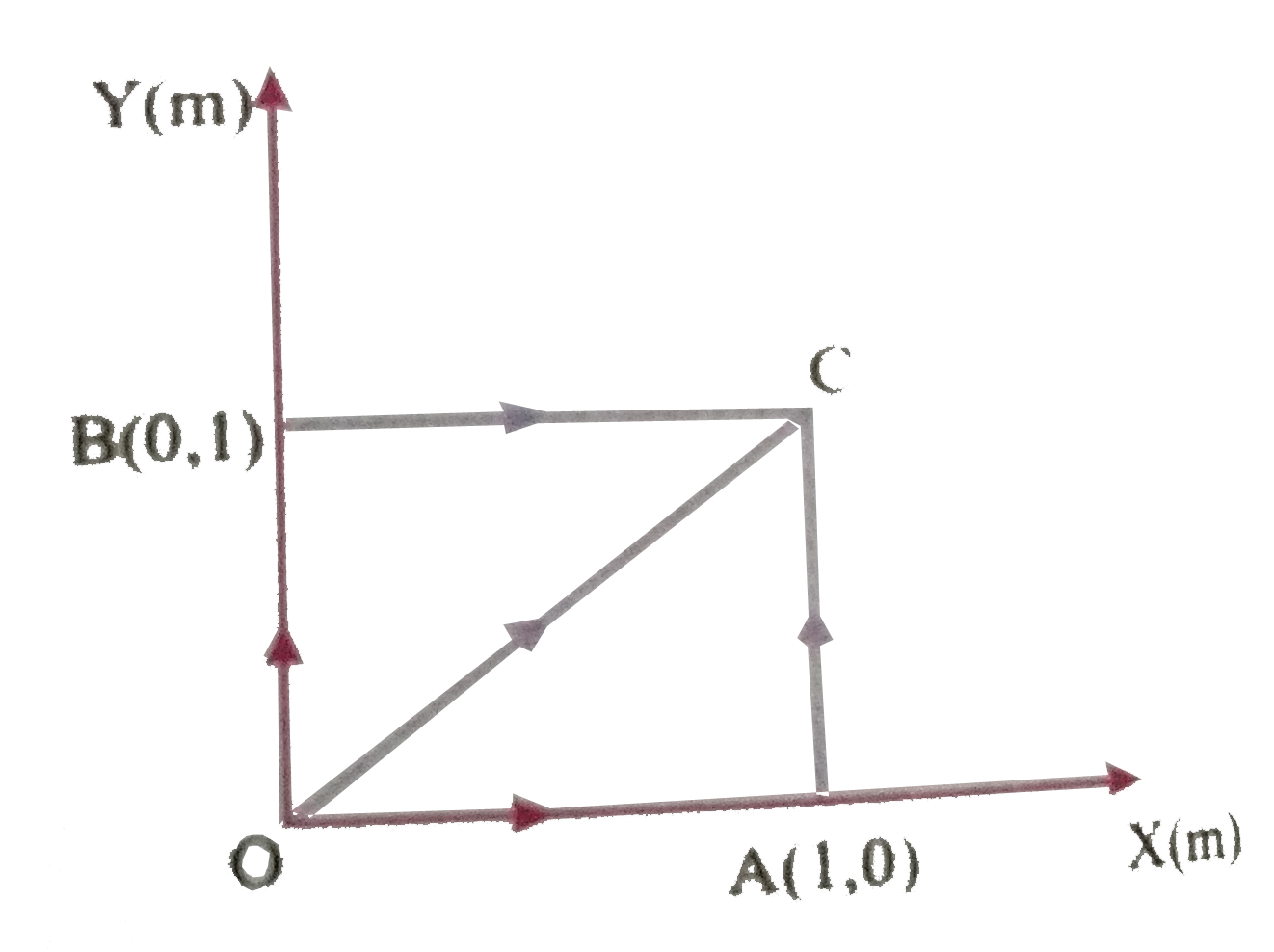One of the forces acting on a certain particle depends on the particle's position in the xy-plane. This force →F expressed in newtons, is given by the expression →F=(xyˆi+xyˆj) where x and y are in metres. The particle is moved from O to C through three different paths :-

Which of the following can be negative ?
Kinetic energy
Potential energy
Chemical Energy
All of these
The correct Answer is:B
Potential energy can be negative.
Topper's Solved these Questions
- WORK POWER AND ENERGYBook:NARAYNAChapter:WORK POWER AND ENERGYExercise:Level-V (Integer)
Explore 5 Videos
- WORK POWER AND ENERGYBook:NARAYNAChapter:WORK POWER AND ENERGYExercise:Level-VI (Single Answer)
Explore 31 Videos
- WORK POWER AND ENERGYBook:NARAYNAChapter:WORK POWER AND ENERGYExercise:Level-V (Multiple Answer)
Explore 13 Videos
- WORK , ENERGY & POWER Book:NARAYNAChapter:WORK , ENERGY & POWER Exercise:EXERCISE IV
Explore 43 Videos
Similar Questions
A force acting on a certain particle depends of the particles position in the xy-plane. This force F is given by the expression
→F=(xyˆi+xyˆj)(1N/m2)
where x and y are expressed in metre. If →F is a conservation force ?

View SolutionA particle moving in the xy plane experiences a velocity dependent force →F=k(vyˆi+vxˆj), where vxandvy are the x and y components of its velocity →v . If →a is the acceleration of the particle, then which of the following statements is true for the particle?
View Solution
Knowledge Check
One of the forces acting on a certain particle depends on the particle's position in the xy-plane. This force →F expressed in newtons, is given by the expression →F=(xyˆi+xyˆj) where x and y are in metres. The particle is moved from O to C through three different paths :-

The work done by this force on path OBC isA12JB−12JC23JD−23JOne of the forces acting on a certain particle depends on the particle's position in the xy-plane. This force →F expressed in newtons, is given by the expression →F=(xyˆi+xyˆj) where x and y are in metres. The particle is moved from O to C through three different paths :-

The work done by this force on path OAC is.A12JB−12JC23JD−23JOne of the forces acting on a certain particle depends on the particle's position in the xy-plane. This force →F expressed in newtons, is given by the expression →F=(xyˆi+xyˆj) where x and y are in metres. The particle is moved from O to C through three different paths :-

The work done by this force on path OC isA12JB−12JC23JD−23J
If →F=yˆi+xˆj then find out the work done in moving the particle from position (2,3) to (5,6)
View SolutionA particle of mass m is moving in the xy-plane such that its velocity at a point (x,y) is given as →v = α(yˆx+2xˆy) where α is a non-zero constant. What is the force →F acting on the particle?
View SolutionConsider a force acting on a particle given as →F=yˆi+xˆj , where ( x, y ) is the instantaneous location of the particle. This type of force is :
View SolutionA particle of mass m moves in the xy-plane with velocity of →v=vxˆi+vyˆj. When its position vector is →r=x→i+y→j, the angular momentum of the particle about the origin is.
View SolutionA particle moves in the xy plane according to the equation
→r=(ˆi+2ˆj)Acosωt
The motion of the particle is
View Solution

